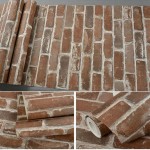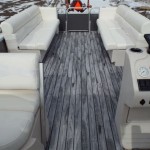Knee Pads For Flooring Installers: Protecting Your Knees on the Job
Flooring installation is a physically demanding profession. Installers spend extended periods kneeling, bending, and squatting, placing significant strain on their knees. This repetitive stress can lead to chronic pain, osteoarthritis, bursitis, and other debilitating conditions. Proper protective equipment is crucial for mitigating these risks, and high-quality knee pads are an essential component of a flooring installer's toolkit. Selecting the right knee pads involves considering the type of flooring being installed, the duration of the work, the work environment, and individual preferences for comfort and protection. This article explores the key aspects of knee pads for flooring installers, focusing on materials, features, and considerations for optimal knee protection.
Material Composition and Durability
The materials used in knee pads significantly impact their durability, comfort, and effectiveness. Common materials include gel, foam, rubber, and various combinations thereof. Each material offers distinct advantages and disadvantages that flooring installers must weigh when making their selection. A durable outer shell is also paramount, as it needs to withstand abrasion, punctures, and the general wear and tear associated with a demanding work environment.
Gel Knee Pads: Gel knee pads are favored for their exceptional cushioning and shock absorption. The gel conforms to the shape of the knee, distributing pressure evenly and reducing localized stress points. They are particularly effective for prolonged kneeling on hard surfaces like concrete or tile. However, gel pads can be heavier and may trap heat, potentially leading to discomfort during extended use in warmer environments. The quality of the gel is also critical; inferior gel can compress and lose its cushioning ability over time. Look for gel pads with a durable outer casing to prevent punctures and leaks.
Foam Knee Pads: Foam knee pads are generally lighter and more breathable than gel pads. They are available in various densities, from soft, conforming foams to firmer, more supportive options. Memory foam knee pads offer excellent comfort by molding to the contours of the knee. Foam pads are well-suited for shorter installations or for use on softer flooring materials like carpet. However, they may not provide sufficient cushioning for extended kneeling on hard surfaces, and they tend to compress and degrade more quickly than gel or rubber pads. Closed-cell foam is preferable as it resists moisture absorption, which can lead to bacterial growth and odor.
Rubber Knee Pads: Rubber knee pads are known for their durability and resistance to abrasion. They are often used in conjunction with other materials like gel or foam to provide a combination of cushioning and support. Rubber pads offer a firm base and can be particularly useful for installers who need to move around frequently while kneeling. However, they can be less comfortable than gel or foam pads for prolonged kneeling, and they may not conform to the shape of the knee as effectively. The type of rubber used matters; look for high-quality, non-marking rubber that won't damage flooring surfaces.
Combined Material Knee Pads: Many knee pads incorporate a combination of materials to leverage the benefits of each. For example, a knee pad might feature a gel core for cushioning, surrounded by a foam layer for comfort, and encased in a durable rubber shell for protection and longevity. These hybrid designs often provide the best balance of comfort, support, and durability. Flooring installers should carefully examine the construction of these pads to ensure that the materials are properly integrated and that the design effectively addresses the specific demands of their work.
The outer shell of the knee pad is just as important as the internal cushioning. Durable materials like heavy-duty nylon, ballistic fabric, or reinforced plastic are essential for resisting abrasion, punctures, and tears. A non-slip surface is also critical for preventing the knee pads from shifting during use, which can compromise protection and increase the risk of injury. Some knee pads feature textured surfaces or specialized coatings to enhance grip and stability.
Design Features and Functionality
Beyond the materials used, the design and features of knee pads significantly impact their functionality and user experience. Consider factors such as the strap system, adjustability, size, shape, and additional features like integrated shin guards or hard caps.
Strap Systems: The strap system is critical for securing the knee pads in place and ensuring a comfortable, secure fit. Common strap systems include elastic straps, hook-and-loop closures (Velcro), and buckle systems. Elastic straps are generally the most comfortable but can stretch out over time and lose their elasticity. Hook-and-loop closures offer adjustability but can wear out or become clogged with debris, reducing their effectiveness. Buckle systems provide a secure and durable closure but may be less comfortable than elastic straps. The best strap system will depend on individual preferences and the specific demands of the job. Look for straps that are wide, adjustable, and made from durable materials. Padding on the straps can also enhance comfort and prevent chafing.
Adjustability: Proper adjustability is essential for ensuring a snug and comfortable fit. Knee pads that are too loose will shift around during use, providing inadequate protection and potentially causing discomfort. Knee pads that are too tight can restrict blood flow and cause pain. Look for knee pads with multiple adjustment points that allow for a customized fit. This is particularly important for installers who wear thick work pants or who have larger-than-average legs.
Size and Shape: Knee pads are available in various sizes and shapes to accommodate different body types and preferences. Some knee pads are designed to cover a larger area of the knee and shin, providing greater protection. Others are smaller and more streamlined, offering greater mobility. Consider the type of flooring being installed and the specific tasks involved when choosing the size and shape of the knee pads. For example, installers who frequently work in tight spaces may prefer smaller, more maneuverable knee pads. It's advisable to try on different sizes and shapes to determine which provides the best fit and coverage.
Hard Caps: Some knee pads feature hard caps made from durable plastic or rubber. Hard caps provide additional protection against impacts and abrasion, particularly when working on rough or uneven surfaces. They are also useful for installers who need to slide or pivot on their knees. However, hard caps can also be less comfortable than soft knee pads, and they may scratch or damage delicate flooring materials. Consider the specific requirements of the job when deciding whether to choose knee pads with hard caps.
Shin Guards: Integrated shin guards provide additional protection for the shins, which are often exposed to bumps and scrapes during flooring installation. Shin guards can be particularly useful for installers who work in cluttered or confined spaces. They can also provide additional support and stability for the knee joint. However, shin guards can make knee pads bulkier and less comfortable, so it's important to weigh the benefits against the potential drawbacks.
Breathability: Prolonged kneeling can lead to sweating and discomfort, especially in warm environments. Knee pads with breathable materials and ventilation holes can help to reduce moisture buildup and improve comfort. Look for knee pads made from breathable fabrics like mesh or perforated foam. Ventilation holes can also help to promote airflow and prevent overheating.
Specific Considerations for Flooring Installation
The type of flooring being installed and the specific working conditions significantly influence the selection of appropriate knee pads. Installers working with different materials or in varied environments require knee pads tailored to those conditions. The duration of the installation project and the types of tools used are also important factors to consider.
Type of Flooring: The type of flooring being installed influences the level of protection required. Installers working with hard, abrasive materials like tile or concrete require knee pads with durable outer shells and ample cushioning. Installers working with softer materials like carpet may prioritize comfort and flexibility over maximum protection. When installing delicate materials like hardwood or vinyl, ensure that the knee pads have non-marking surfaces to prevent damage.
Working Environment: The working environment also influences the selection of knee pads. Installers working in hot, humid environments require breathable knee pads to prevent overheating. Installers working in damp or wet environments require waterproof or water-resistant knee pads to prevent moisture buildup. Installers working in confined spaces may require smaller, more maneuverable knee pads.
Duration of Installation: The duration of the installation project is a crucial factor. For short-term projects, less expensive and less durable knee pads may suffice. However, for long-term projects, invest in high-quality, durable knee pads that can withstand extended use. Consider the long-term cost savings associated with preventing knee injuries and improving comfort and productivity.
Tools Used: The types of tools used during flooring installation can also influence the choice of knee pads. Installers who use heavy or bulky tools may require knee pads with additional support and stability. Installers who frequently slide or pivot on their knees may require knee pads with hard caps. Consider the specific demands of the job when selecting knee pads.
Properly cared for knee pads will provide greater comfort and protection, and will last much longer. Regularly inspect knee pads for wear and tear, paying close attention to the straps, seams, and outer shell. Replace worn or damaged knee pads promptly to maintain optimal protection. Clean knee pads regularly to remove dirt, debris, and sweat. Follow the manufacturer's instructions for cleaning and care. Store knee pads in a cool, dry place to prevent damage.

Roberts Hard Cap Knee Pads For Carpet Installation 79023 6 The Home Depot

Other Cove Base Tools Knee Pads Crain

Proknee 0714 Custom Fit Knee Pads W 5 8 Cushions Tools4flooring Com

Proknee 0714 Custom Fit Professional Knee Pads W 1 Cushions Tools4flooring Com

Crain 197 Deluxe Comfort Kneepads Kevmor Trade Supplies

Medical Knee Pads Flooring Tools Direct

Traxx Ttx 6440 Pro 400 Engineered Knee Pads Shagtools

Hdx 2 In 1 Work Knee Pads Hdx2n1kp The Home Depot

The Best Knee Pads For Flooring Offer Many Benefits Panel Town Floors

Hard Cap Knee Pads Protection For Carpentry Floor Carpet
Related Posts








